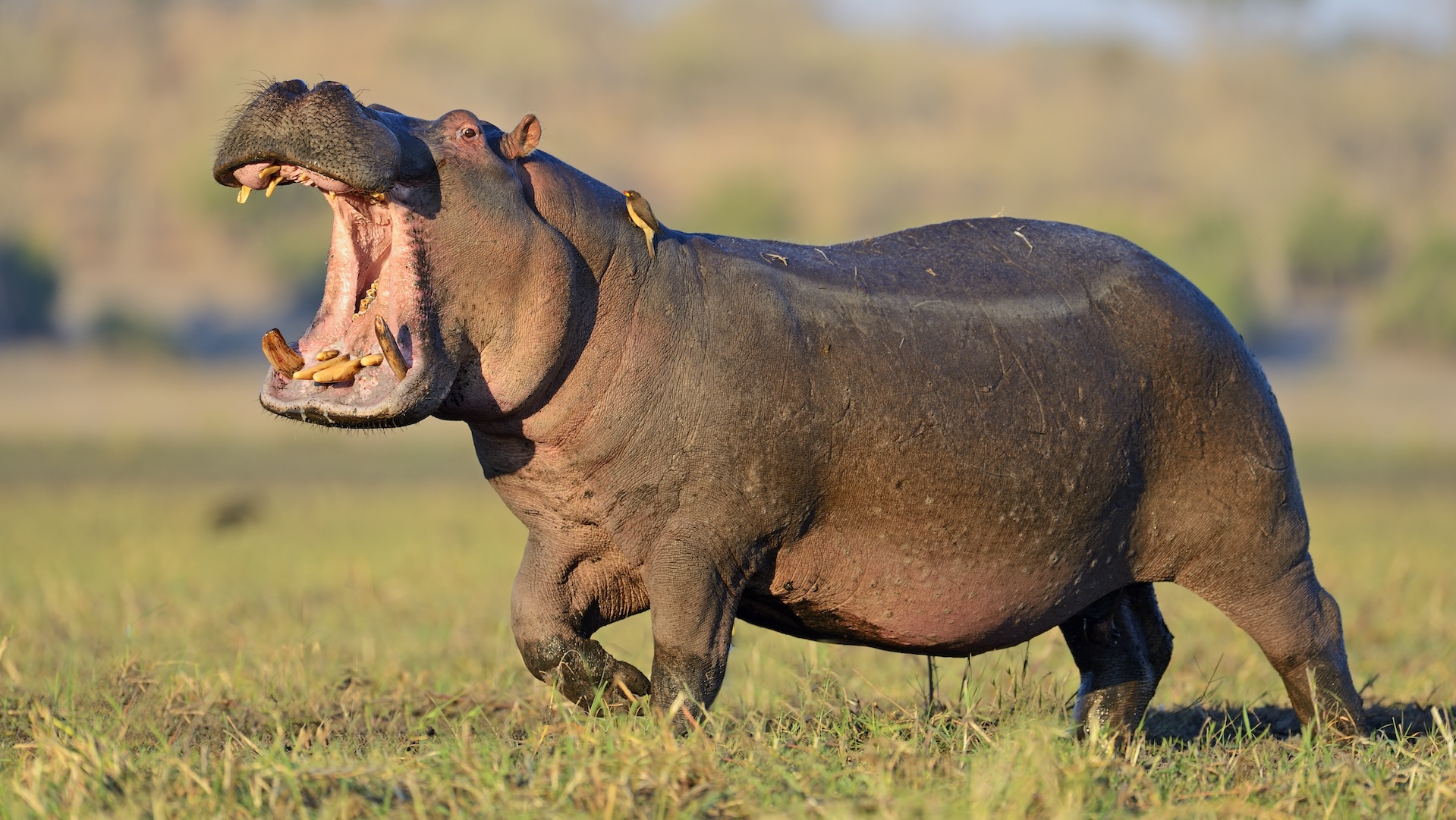Is hippo milk really pink?
Hippos don't produce pink milk, but they do produce a pink, sweat-like secretion.

A rumor that hippopotamus milk is pink has been spreading on the internet for many years — and the idea gained traction when National Geographic posted about it on its Facebook page.
But is hippo (Hippopotamus amphibius) milk actually pink? It turns out that like other mammal milk, hippo milk is actually white or cream in color.
"I have never heard their milk is pink, so that is a rumor," Rebecca Lewison, a biology professor at San Diego State University and co-chair of the IUCN SSC Hippo Specialist Group, which promotes the conservation of common and pygmy hippos (Choeropsis liberiensis), told Live Science: "However, hippo 'sweat' is pink. That's real and there has been some interesting science into what compounds are in there," Lewison added. "To be clear, it is not sweat but a skin secretion that is a combo of sunscreen and antibiotic and antimicrobial compounds."
Related: Hippos unleash poop tornado in response to stranger danger
The hippo "sweat" is an oily secretion released by the animal's mucous glands. While it is sometimes referred to as red sweat or blood sweat, it is neither blood nor sweat but a combination of hipposudoric acid and nor-hipposudoric acid. These two substances play an important role in protecting the hippo's health.
"The red and orange pigments are non-benzenoid aromatic compounds that are acidic and have antibiotic as well as sunscreen properties," Lewison said.
This substance moisturizes the skin, keeps the animals cool and protects them from harmful bacteria. Hippos are amphibious and spend up to 16 hours a day in muddy, murky water, so this secretion minimizes the risk of infection. Hippos always have scratches and cuts, but they appear to heal cleanly even when the animal has been bathing in mud.
Sign up for the Live Science daily newsletter now
Get the world’s most fascinating discoveries delivered straight to your inbox.
Although this thick secretion comes out colorless like human sweat, it gradually turns red, pink or orange as the pigment polymerizes in the sun. After a few hours, it turns brown.
This secretion could possibly then mix with the milk when a baby hippo is feeding, which could give the milk a pink hue, Lewison said.
However, pink milk could be the sign of a health problem, said Barbara Henry, curator of nutrition at Cincinnati Zoo and Botanical Garden. "Hippo milk is not pink. If there is a pink color that means there may be an issue that involves blood," she told Live Science.

Lydia Smith is a health and science journalist who works for U.K. and U.S. publications. She is studying for an MSc in psychology at the University of Glasgow and has an MA in English literature from King's College London.









